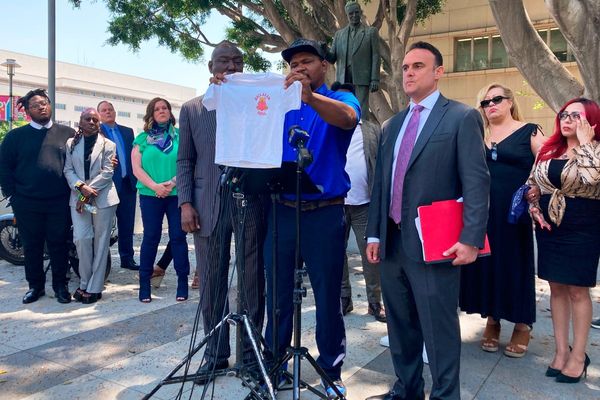It was on September 15, 2013 that Narendra Modi addressed an ex-servicemen rally at Rewari, Haryana as the Bharatiya Janata Party’s prime ministerial candidate, where he vociferously supported the demand of ‘One Rank One Pension’ (OROP) for all soldiers. Mr. Modi was then campaigning in poetry, and nine years later, as the Agnipath scheme for recruitment of short-term contracted soldiers was announced, he has been forced to contend with the reality of governing in prose. However hard the Government may try to obfuscate, the driving factor for this U-turn — from ‘One Rank One Pension’ to ‘No Rank No Pension’ — is economics.
Financial motivations
The OROP demand became tricky to fulfil once Mr. Modi became Prime Minister, but it was officially instituted in November 2015 for more than 25 lakh defence pensioners. It came with an immediate annual financial implication of ₹7,123.38 crore and the actual arrears from July 1, 2014 to December 31, 2015 were ₹10,392.35 crore. The financial burden increased cumulatively over time and has substantially increased the budgetary expenditure on defence pensions. In the current financial year, ₹1,19,696 crore has been budgeted for pensions, along with another ₹1,63,453 crore for salaries — that is 54% of the allocation for the Defence Ministry.
It has been argued that the savings in the pensions bill — which will show up on the books only after a couple of decades — would be directed towards the modernisation of defence forces. The armed forces do not have that kind of time available to them to postpone their already long-delayed modernisation. The money must come now. The Indian Air Force is already down to 30 squadrons of fighter jets against the 42 squadrons it needs, and the Indian Navy is at 130 ships when its vision was to be a 200-ship navy; the Indian Army is already short of 1,00,000 soldiers. The announcement of the Agniveer scheme is an implicit acknowledgement that the Indian economy is incapable of supporting the armed forces that India needs. It faces an active military threat from two adversaries, China and Pakistan, and the internal security challenges in Kashmir and the northeastern States. These realities cannot be wished away. Instead of expanding the economy to support the military, the Government has resorted to shrinking the military.
Damaging consequences
As the short-term recruitment policy has neither been theoretically modelled nor tried out as a pilot project, the exact consequences of the move will only be known as they play out. But its adverse effect on the professional capabilities of the armed forces is certain. It starts with the very high turnover of young soldiers, the increase in training capacities and infrastructure and the augmentation of the administrative setup for greater recruitment, release, and retention of soldiers. An armed forces boasting of a poor teeth-to-tail ratio is further increasing the tail. The Indian Air Force and the Indian Navy employ their airmen and sailors in very specialised roles, which require technical skills, and a high degree of training and experience. They form the backbone of the system that keeps the warships at sea, the fighter jets in the air, and high-tech weapons and platforms operational. Because the short-term contractual soldier model (the Agniveer scheme) is going to take a few years to fully play out at an organisational level, the actual degradation of operational capability will only be known then.
In the case of the Indian Army, the challenge is two-fold. The Indian Army has emerged from a legacy which traces to 1748. In the early years, says a paper by Syed Hussain Shaheed Soherwordi, the emphasis was on discipline and efficiency, and their separation from the fragmented Indian society. This turned the Indian soldiers into a professional, united and autonomous fighting force whose loyalty, in Stephen Rosen’s words, was to their ‘homogeneous military units’ for which they served ‘full time, long term’ rewarded with a secure pay and pension system. As the homogenous nature of the Bengal army was seen as one of the factors that contributed to the outbreak of the 1857 Mutiny, the British Crown thereafter maintained distinction and separateness of castes and class in the Indian Army, as described in the paper.
Even after Independence, class-based recruitment — the euphemism for caste — has defined the nature and the character of the Indian Army, shaping its ethos and fighting capabilities. In an affidavit in court a couple of years ago, the Government asserted that the Army has “performed exceedingly well while maintaining the class composition in recruitment of presidential bodyguards and changing to All India class composition will not only affect the functioning of the PBG [President’s Bodyguard] Presidential but will also affect the seniority structure of the regiment”. It defended class-based units by claiming that “after selection, personnel are grouped based on functional requirements to have optimum operation effectiveness”.
In the Agnipath proposal, the class-based recruitment has been replaced with an all-India all-class recruitment. The reasons for this drastic shift in the Government’s thinking are a secret but it will strike at the core of the organisational management, leadership structures and operating philosophy of the Indian Army. Even though the soldiers in the Indian Army are professionally trained, they also draw their motivation from their social identity — reflected in the characterisation of naam, namak and nishan — where each soldier cares for his reputation among the peers in his caste group or his village or his social setting. To replace that with a pure professional identity of a soldier will bring its own challenges in a tradition-bound army, where units showcase their campaigns in the 18th century as battle honours. Running a Gorkha regiment with a Jat soldier from Haryana, a Malayali from Kerala and a Meitei from Manipur needs massive restructuring, something the Army currently seems unprepared for. It is driven more by a hope that as an adaptive institution with great resilience, the Army will somehow find a way to deal with this upheaval while protecting its operational capabilities.
There are other challenges thrown up by the model. There will be major problems in training, integrating and deploying soldiers with different levels of experience and motivations. The criterion of identifying the 25% short-term contracted soldiers to be retained could result in unhealthy competition. An organisation which depends on trust, camaraderie and esprit de corps could end up grappling with rivalries and jealousies amongst winners and losers, especially in their final year of contract. Even though the Government has kept the contract at four years to deny the Agniveer gratuity and is not counting the contractual period towards regular service, these provisions are bound to be challenged legally; and just like the OROP issue, could become a politically attractive demand for longer tenures and pensions to be picked up by the Opposition parties. Over time, this will lead to the salary and pension budget creeping back up again.
Political, social implications
The Agnipath scheme also does away with the idea of a State-wise quota for recruitment into the Army, based on the Recruitable Male Population of that State which was implemented from 1966. This prevented an imbalanced army, which was dominated by any one State, linguistic community or ethnicity, as it happened in the case of Pakistan with its province of Punjab. Academic research shows that the high level of ethnic imbalance has been associated with severe problems of democracy and an increased likelihood of civil war, a worrying scenario for today’s India where federalism is being severely tested by the ruling party’s ideology.
Coupled with this is the lack of hope in India’s economy, where over 45 crore Indians have stopped looking for jobs, there are high levels of unemployment and underemployment. It is to this mix that these few thousand young men who have been trained in inflicting organised violence will be thrown up every year. From erstwhile Yugoslavia to Rwanda — and closer home, during Partition — there are numerous examples of demobilised soldiers leading to increased violence against minorities. Today’s India is characterised by weak state capacity, where the state has ceded its exclusive right to violence to majoritarian groups. This provides a heady cocktail which only needs a spark to consume India.
In India, the Indian Army has so far provided salary, uniform and prestige, an inheritance of the British who took care of the living conditions, facilities for the soldiers’ families, and post-retirement benefits and rewards, such as grants of land. This meant that military service remained attractive to many generations of the same families, anchoring them in tradition. It also resulted in social standing and privilege where pensions resulted in a comfortable life for the retired soldier. A short-term contractual soldier, without earning pension, will be seen as doing jobs after his military service that are not seen to be commensurate in status and prestige with the profession of honour. It will reduce the motivation of those joining on short-term contracts while diminishing the “honour” of a profession which places extraordinary demands on young men. The Government’s yearning for financial savings runs the risk of reducing the honour of a profession, the stability of a society and the safety of a country.
Sushant Singh is Senior Fellow at the Centre for Policy Research







